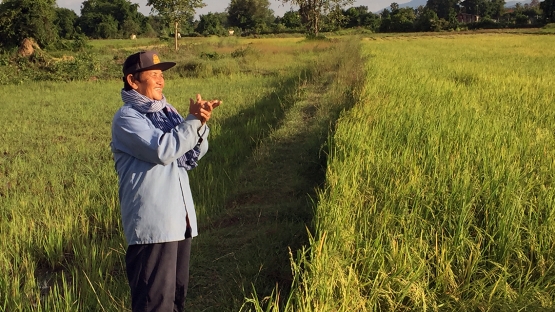Phnom Penh, Cambodia – Poorer farmers who cannot afford to buy enough fertilizer can achieve high yields by using more manure and compost and planting alternative crops between rice growing seasons, Cambodia’s agricultural researchers have found. Their recommendations are the result of research supported by the IAEA and the Food and Agriculture Organization of the United Nations (FAO), using nuclear-related techniques to measure fertilizer and water uptake by rice and other crops.
Cambodia is among a growing number of countries using such techniques to increase crop yields, optimize fertilizer use and evaluate varieties of rice, cereals and vegetables for their efficiency in making the best use of fertilizers. (See Labelled nitrogen isotope for more) Currently, scientists from over 60 countries are benefiting from assistance in this area.
Blending organic and inorganic
Experiments conducted by scientists at the Cambodia Agricultural Research and Development Institute (CARDI) found that replacing half of the recommended amount of chemical fertilizer with organic materials when inorganic fertilizer is either not accessible or too expensive increases rice yields. This has various benefits, explained Sarith Hin, Head of Soil and Water Science at CARDI: farmers save money on chemical fertilizer, and at the same time they can achieve higher yields.
“The results demonstrate that even poorer farmers, who cannot afford to buy much fertilizer, can increase yields,” Hin said. In the case of peanuts, a legume cash crop, replacing half of the chemical fertilizers with a mix of cattle manure and rice straw more than doubled yields (see graph). For rice, the use of a reduced amount of chemical fertilizer with organic manure led to yields comparable to the use of chemical fertilizers only.








